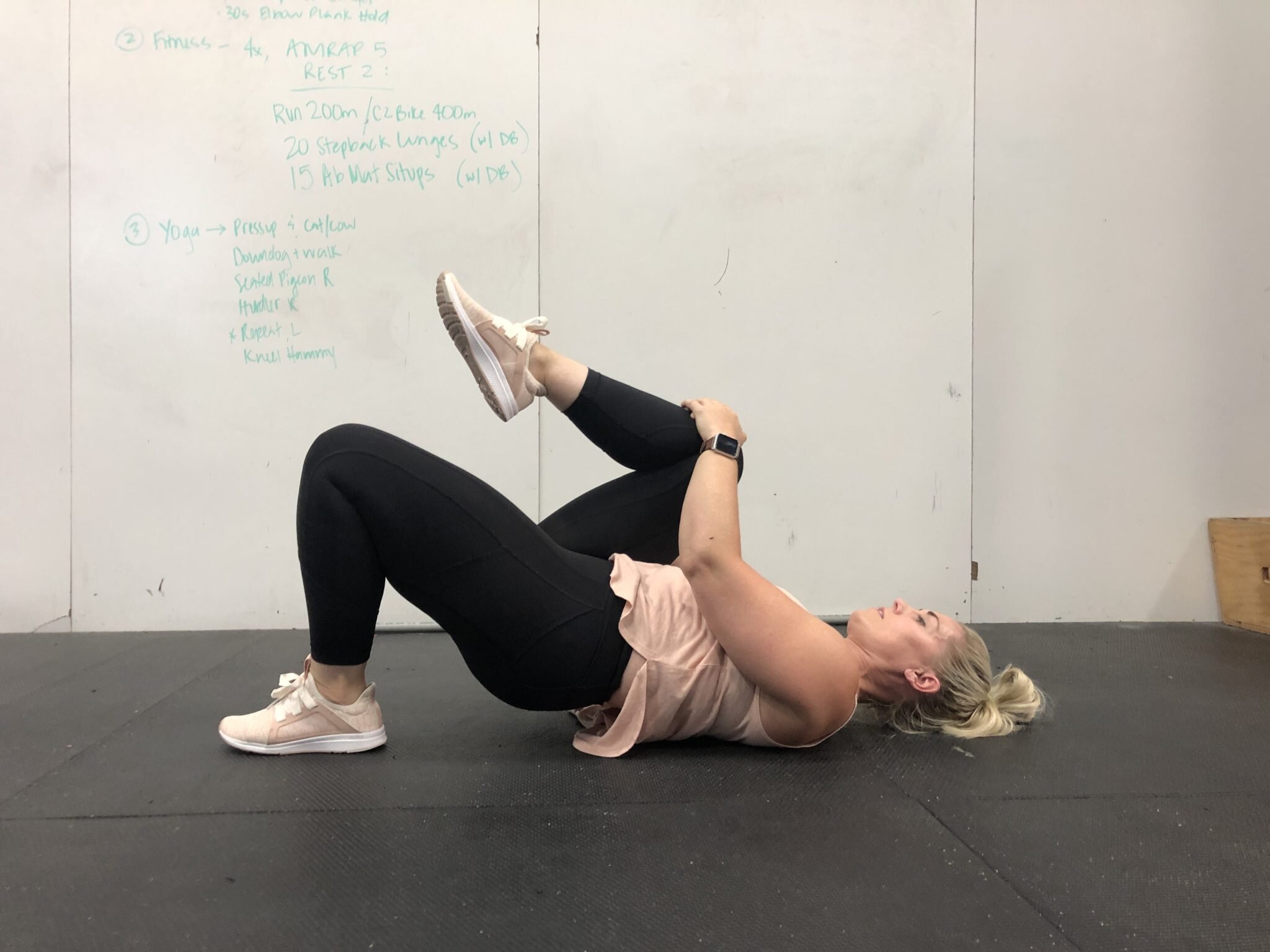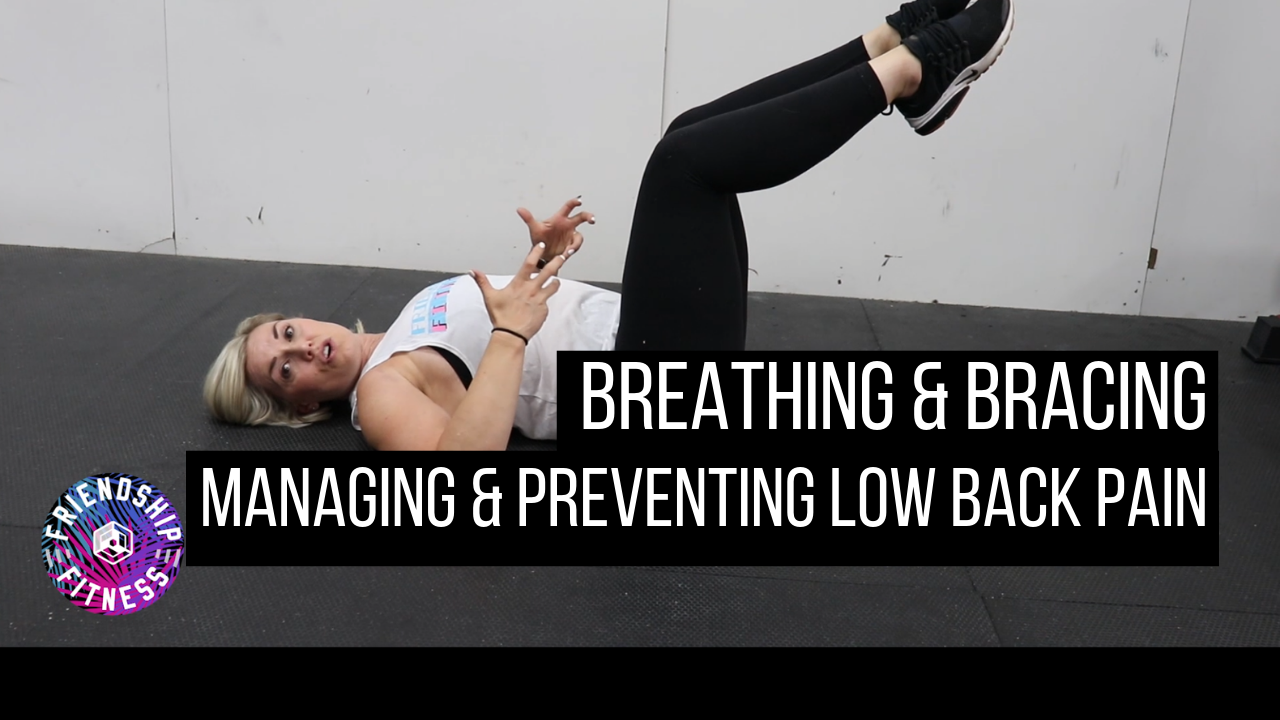Breathing & Bracing: Preventing & Managing Low Back Soreness
https://www.youtube.com/watch?v=wSUdWUflHDM&feature=youtu.beIt’s unreasonable to think that when we participate in regular weightlifting or exercise that we will never feel any back soreness, especially if you are someone who has dealt with it fairly regularly, you will probably have to manage it from time to time. A crucial part is working on your breathing, bracing, and movement patterns as discussed in part one, but there are some strategies you can use to help prevent and manage soreness.These exercises are a general guideline, so they might not be perfect for everyone! The goal with each one is to be performed correctly and not pushing into any real strain or discomfort, so not using the no pain no gain mentality!
- Lacrosse Ball Massage/Self Myofascial Release: Use a lacrosse ball to roll out the back and side of your hip, corner of your low back (this is your Quadratus Lumborum muscle), and hip flexor- think more going right inside your hip bone in the front- so kind of your lower stomach! Spend a little time in each area, but extra focus on areas with soreness!
- Stretching: With each stretch you should be working on your proper diaphragmatic breathing. I like each one to be held for 6 breaths that you inhale (expanding through your midsection) for 6 seconds in, pause with that increased pressure, then exhale for 6 seconds out. There should not be any real straining with these stretches!
-Cross legged 3-way back stretch - Sit criss cross apple sause (the position formerly known as Indian style) and fold forward over your legs. You will perform this to the center and over each knee for 6 breaths each. (Do all 6 breaths in one position before moving). You should be able to feel your stomach press in to your legs on the inhale as well as your low back expand here. Should feel in your low back and hip 


 -Couch stretch- Most people are familiar with a lunge stretch with your back leg bent, but the positioning of it is very important! As you bring your chest up you should make sure you keep your hips rolled under and ribs down so that you are not extending through your lumbar spine! This helps to ensure you are stretching your hip flexor all the way through the entire muscle!
-Couch stretch- Most people are familiar with a lunge stretch with your back leg bent, but the positioning of it is very important! As you bring your chest up you should make sure you keep your hips rolled under and ribs down so that you are not extending through your lumbar spine! This helps to ensure you are stretching your hip flexor all the way through the entire muscle!  -Trunk rotation stretch- Lay on your back and lift 1 leg up and over trying to keep your arms down flat. You can use your opposite hand to pull your leg over if necessary. This is another one where you should be able to feel your stomach press into your leg on the inhale!
-Trunk rotation stretch- Lay on your back and lift 1 leg up and over trying to keep your arms down flat. You can use your opposite hand to pull your leg over if necessary. This is another one where you should be able to feel your stomach press into your leg on the inhale! 
- Strengthening- There are a million strengthening and core stabilization exercises that could be good- so these are just a couple to start with! It is most important that you perform these exercises with control and only through a motion you are able to stay in proper positions.
-Lift to table top/Toe taps- Lay on your back with your legs bent & feet on the floor. Rock your hips backward to press your low back into the ground and contracting your abdominals. Lift 1 leg so your knee is above your hip. If you are able to without moving your back position lift the other leg up. If you are still in a good position you can work on tapping 1 foot down then the other. If at any point your feel your low back lift or your hips rock forward, perform less movement with the exercise. 2x10  -Single leg bridge with knee hug- Lay on your back with your legs bent & feet on the floor. Give one knee a hug. Press down with the foot that is on the floor, keeping your foot flat, to lift your hip up off the floor only has high as possible. Should feel your hamstring and butt work, but not your low back! 2x10
-Single leg bridge with knee hug- Lay on your back with your legs bent & feet on the floor. Give one knee a hug. Press down with the foot that is on the floor, keeping your foot flat, to lift your hip up off the floor only has high as possible. Should feel your hamstring and butt work, but not your low back! 2x10 
- Breathing- It can be helpful to work your diaphragmatic breathing in a rounded position. Sitting back on your heels and flexing forward you should be able to keep your back rounded and increase pressure in your midsection on inhale. You can also try to deepen that flexion and maintain pressure on the exhale, which sometimes will really make your abs work! Try 5 breaths without losing pressure!
- Press-Ups- A super popular one for back soreness! Lay on your stomach and press up with your arms as far as you comfortably can. Do not force any movement into pain. Keep your hips flat on the floor. 10 reps.
 This gives you a general outline of some exercises to work to 1. Help decreased back soreness and 2. Improve some stability and mobility to prevent soreness. Remember these exercises are not for everyone and if you do NOT work your proper bracing and positioning, you will have a hard time truly fixing your problem.If you are looking for more a more specific program that is individualized to you, reach out and we can set that up! It takes time to change habits and develop better movement patterns, not just weeks, but months to years! Stick with it so you can see long term benefit! Note: Seek medical attention if you have any numbness, cramping, or tingling down your leg(s) or any changes in bowel or bladder habits.
This gives you a general outline of some exercises to work to 1. Help decreased back soreness and 2. Improve some stability and mobility to prevent soreness. Remember these exercises are not for everyone and if you do NOT work your proper bracing and positioning, you will have a hard time truly fixing your problem.If you are looking for more a more specific program that is individualized to you, reach out and we can set that up! It takes time to change habits and develop better movement patterns, not just weeks, but months to years! Stick with it so you can see long term benefit! Note: Seek medical attention if you have any numbness, cramping, or tingling down your leg(s) or any changes in bowel or bladder habits.

